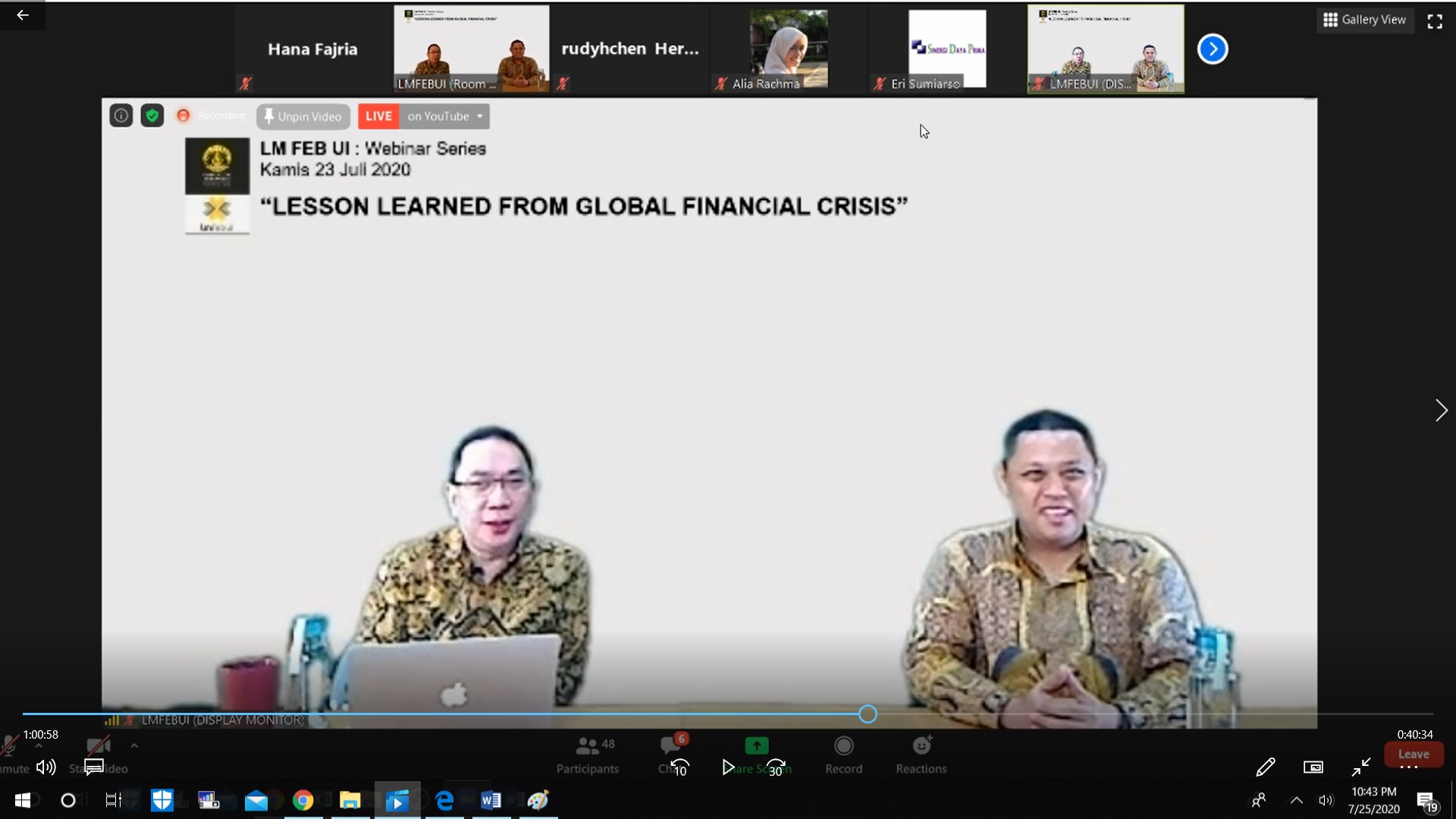LM FEB UI ‘s Webinar Series: Lesson Learned From Global Financial Crisis
Hana Fajria –FEB UI Public Relations Officer
Depok – The Management Institute at the Faculty of Economics and Business, Universitas Indonesia (LM FEB UI), held a webinar series entitled Lesson Learned From Global Financial Crisis using the Zoom application, Thursday (23/7/2020).
Speaker at the webinar was Dr. R. Nugroho Purwantoro, Senior Consultant Management at LM FEB UI and FEB UI lecturer. Dr. Willem Makaliwe, Head of LM FEB UI, moderated the webinar.
Nugroho opened the session by talking about the 2007-2008 global financial crisis that is still applicable in today’s situation.
“A financial crisis occurs when panic (or fear of panic) affects the functions of the financial system. Usually, a crisis begins with a slowdown in growth, be it economic growth or growth of an asset value. When the slowdown persists, usually people will panic and sell their assets,” said Nugroho.
The 2007-2008 crisis was triggered by the collapse of the US housing market as homeowners defaulted on their mortgage payments. The mortgage crisis brought down the US financial sector, affecting many parts of the world, causing liquidity tightening, driving financial companies into bankruptcy and forcing stock and bond markets to crash.
The global financial crisis prompted economists to determine the causes of the problem and to look for ways to prevent similar cases in the future. One of the causes of the crisis was the large and rapid increase in debt accumulation in the US from 2000 to 2007. Meanwhile, according to the theory of financial development, credit is an indicator of the sustainability of the national financial system. Credit includes access to credit and the ability of financial institutions to lend money. Both were apparant in the US, as indicated by the easy access to home loans and the growing number of subprime mortgages.
According to the theory of financial development, the US economy should have experienced growth and stability. However, the rapid increase in credit accumulation in the US caused instability and crisis. The anomaly was evidence of failure of financial development and prompted the International Monetary Fund (IMF) to review the theory and to prove its relevance in explaining growth and economic stability.
The global financial crisis that was triggered by the US mortgage crisis showed that governments were not prepared. They only had tools to combat ancient banks, not modern crises. The lesson learned from the crisis is that all countries need to use a combination of an emergency loan program, guarantees and expanded capital injections for creative new uses. Evidence shows that “firefighting” actions were successful, but that the came at a price: political backlash, in some cases reducing firefighting capability for the next crisis.
The only reliable predictor of a financial crisis is an increase in the overall impact of the economy. When this occurs, panic is highly likely to ensue because debt is short-term (“runnable”) and has been a long time since the last crisis (complacency, “This time it’s different”).
“The best way to produce safe assets is to use simple and convenient collaterals. The best collateral is housing, which has played a role in every modern financial crisis in developed countries. At this point, to learn the lessons of the crisis requires fast and massive handling to break the chain of panic and restart the economy,” Nugroho concluded. (hjtp)
(lem)




